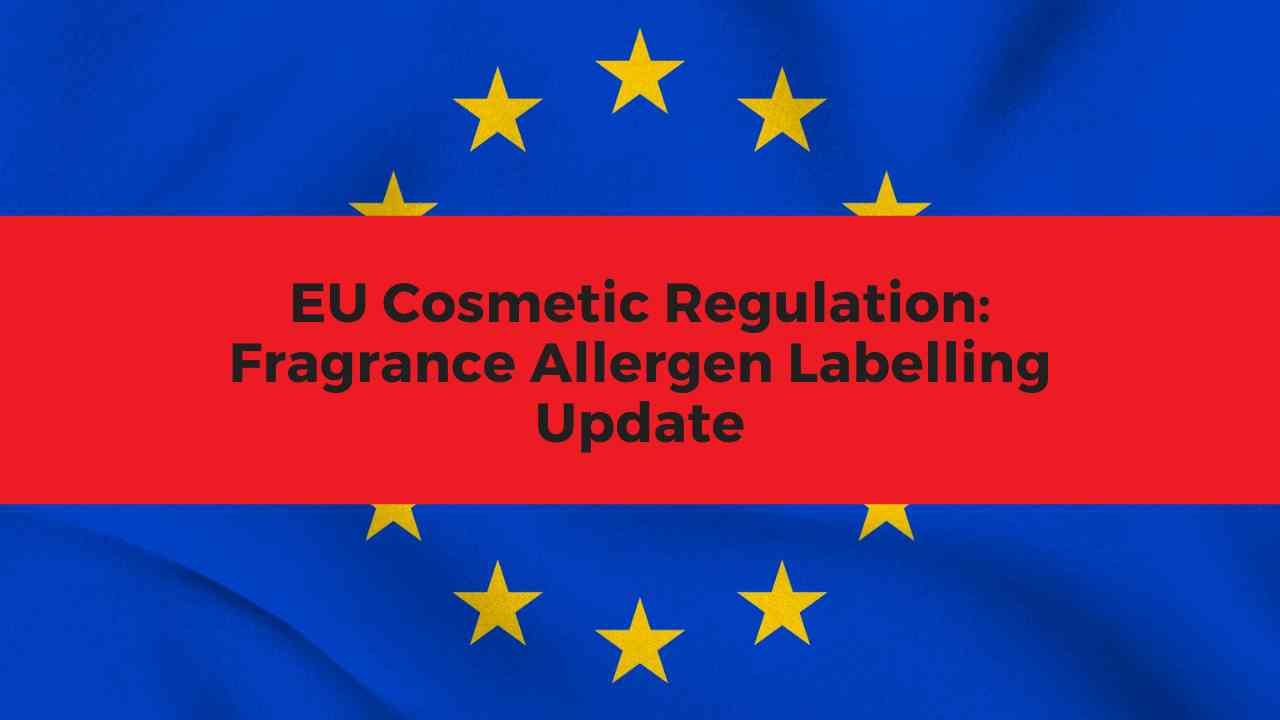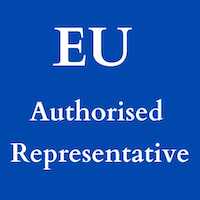In response to rising concerns about fragrance allergies, Regulation (EU) 2023/1545 introduces important changes to allergen listing on cosmetic labelling. In this blog post we will explore the rationale behind the regulation, the newly identified fragrance allergens, and the new concentration thresholds that trigger labelling.
Fragrance Allergens
Regulation (EU) 2023/1545 is an amendment to Regulation 1223/2009, the overarching EU cosmetic regulation. Fragrance allergies affect 1-9% of the population. As such, prevention measures are critical in mitigating the risks associated with fragrance allergens. Let’s explore the two types of prevention.
Primary Prevention
Primary prevention involves proactively reducing the occurrence of fragrance allergies in the first place. This is achieved by imposing restrictions on certain fragrance allergens commonly used in cosmetic products. By limiting the exposure to these allergens, regulatory authorities aim to reduce the number of individuals developing sensitivities.
Secondary Prevention
Despite primary prevention efforts, there will still be individuals who have already developed fragrance allergies. This is where secondary prevention becomes crucial. To protect these sensitised individuals, the updated regulation focuses on providing clear and detailed information about the presence of individual fragrance allergens on cosmetic product labels. This is where Regulation (EU) 2023/1545 comes in.
56 New Fragrance Allergens and Thresholds
The Scientific Committee on Consumer Safety (SCCS) conducted a thorough evaluation and identified 56 additional fragrance allergens, which have been proven to cause allergies in humans. Regulation (EU) 2023/1545 lists these new allergens.
The 56 Allergens
| Count | Chemical Name | CAS Number |
|---|---|---|
| 1 | Benzyl Alcohol | 100-51-6 |
| 2 | 6-Methyl Coumarin | 92-48-8 |
| 3 | Citral | 5392-40-5 |
| 4 | Geranial | 141-27-5 |
| 5 | Neral | 106-26-3 |
| 6 | Isoeugenol | 97-54-1 |
| 7 | (E)-2-methoxy-4-(prop-1-enyl)phenol; (trans-Isoeugenol) | 5932-68-3 |
| 8 | (Z)-2-methoxy-4-(prop-1-enyl)phenol; (cis-Isoeugenol) | 5912-86-7 |
| 9 | Citronellol | 106-22-9/26489-01-0 |
| 10 | (3R)-3,7-dimethyloct-6-en-1-ol | 1117-61-9 |
| 11 | (3S)-3,7-dimethyloct-6-en-1-ol | 7540-51-4 |
| 12 | Limonene | 138-86-3/7705-14-8 |
| 13 | (R)-p-mentha-1,8-diene; (d-limonene) | 5989-27-5 |
| 14 | (S)-p-mentha-1,8-diene; (l-limonene) | 5989-54-8 |
| 15 | Pinus Mugo Leaf Oil; Pinus Mugo Twig Leaf Extract; Pinus Mugo Twig Oil | 90082-72-7 |
| 16 | Pinus Pumila Needle Extract; Pinus Pumila Twig Leaf Extract; Pinus Pumila Twig Leaf Oil | 97676-05-6 |
| 17 | Cedrus Atlantica Bark Extract; Cedrus Atlantica Bark Oil; Cedrus Atlantica Bark Water; Cedrus Atlantica Leaf Extract; Cedrus Atlantica Wood Extract; Cedrus Atlantica Wood Oil | 92201-55-3/8023-85-6 |
| 18 | Turpentine | 9005-90-7/8006-64-2/8052-14-0 |
| 19 | Alpha-Terpinene | 99-86-5 |
| 20 | Terpinolene | 586-62-9 |
| 21 | Myroxylon Balsamum Pereirae Balsam Extract; Myroxylon Balsamum Pereirae Balsam Oil; Myroxylon Pereirae Oil; Myroxylon Pereirae Resin Extract; Myroxylon Pereirae Resin | 8007-00-9 |
| 22 | Alpha-Damascone; cis-Rose ketone 1 | 43052-87-5/23726-94-5 |
| 23 | trans-Rose ketone 1 | 24720-09-0 |
| 24 | Rose ketone 4 (Damascone) | 23696-85-7 |
| 25 | Rose ketone 3 (delta-Damascone) | 57378-68-4 |
| 26 | trans-Rose ketone 3 | 71048-82-3 |
| 27 | cis-Rose ketone 2 (cis-beta-Damascone) | 23726-92-3 |
| 28 | trans-Rose ketone 2 (trans-beta-Damascone) | 23726-91-2 |
| 29 | 3-Propylidenephthalide | 17369-59-4 |
| 30 | Lippia citriodora absolute | 8024-12-2/85116-63-8 |
| 31 | Methyl Salicylate | 119-36-8 |
| 32 | Methyl 2-hydroxybenzoate | 119-36-8 |
| 33 | 3,7-Dimethyl-2,6-octadienal | 5392-40-5 |
| 34 | (E)-3,7-dimethylocta-2,6-dienal | 141-27-5 |
| 35 | (Z)-3,7-dimethylocta-2,6-dienal | 106-26-3 |
| 36 | Isoeugenol | 97-54-1 |
| 37 | (E)-2-methoxy-4-(prop-1-enyl)phenol; (trans-Isoeugenol) | 5932-68-3 |
| 38 | (Z)-2-methoxy-4-(prop-1-enyl)phenol; (cis-Isoeugenol) | 5912-86-7 |
| 39 | Phenol, 2-methoxy-4-(1-propenyl) | 97-54-1 |
| 40 | (E)-2-methoxy-4-(prop-1-enyl)phenol; (trans-Isoeugenol) | 5932-68-3 |
| 41 | (Z)-2-methoxy-4-(prop-1-enyl)phenol; (cis-Isoeugenol) | 5912-86-7 |
| 42 | Citronellol | 106-22-9/26489-01-0 |
| 43 | (3R)-3,7-dimethyloct-6-en-1-ol | 1117-61-9 |
| 44 | (3S)-3,7-dimethyloct-6-en-1-ol | 7540-51-4 |
| 45 | Limonene | 138-86-3/7705-14-8 |
| 46 | (R)-p-mentha-1,8-diene; (d-limonene) | 5989-27-5 |
| 47 | (S)-p-mentha-1,8-diene; (l-limonene) | 5989-54-8 |
| 48 | Citronellol | 106-22-9/26489-01-0 |
| 49 | (3R)-3,7-dimethyloct-6-en-1-ol | 1117-61-9 |
| 50 | (3S)-3,7-dimethyloct-6-en-1-ol | 7540-51-4 |
| 51 | Limonene | 138-86-3/7705-14-8 |
| 52 | (R)-p-mentha-1,8-diene; (d-limonene) | 5989-27-5 |
| 53 | (S)-p-mentha-1,8-diene; (l-limonene) | 5989-54-8 |
| 54 | Pinus Mugo Leaf Oil; Pinus Mugo Twig Leaf Extract; Pinus Mugo Twig Oil | 90082-72-7 |
| 55 | Pinus Pumila Needle Extract; Pinus Pumila Twig Leaf Extract; Pinus Pumila Twig Leaf Oil | 97676-05-6 |
| 56 | Cedrus Atlantica Bark Extract; Cedrus Atlantica Bark Oil; Cedrus Atlantica Bark Water; Cedrus Atlantica Leaf Extract; Cedrus Atlantica Wood Extract; Cedrus Atlantica Wood Oil | 92201-55-3/8023-85-6 |
Refer to the official allergen list here.
New Thresholds
To strike a balance between consumer safety and industry feasibility, the regulation sets concentration thresholds for allergens. Fragrance allergens exceeding 0.001% in leave-on products and 0.01% in rinse-off products must be identified on the cosmetic label. This approach ensures that sensitised individuals can make informed decisions about the products they use.
What you need to know
Before certain dates outlined below, manufacturers and brands must update product labelling to comply with the new requirements described in Regulation (EU) 2023/1545. Moreover, they should review their product formulations to ensure compliance with the new regulation.
Deadlines
31 July 2026
New products cannot be placed on the market after this date if they do not comply with this regulation.
31 July 2028
Non-compliant products must be removed from the market by this date (sell-through period).
Regulation 2023/1545 brings vital updates to the labelling of fragrance allergens in cosmetic products. The regulation aims to protect consumers from developing fragrance allergies and helps sensitised consumers make informed choices. Subscribe for updates on cosmetic regulation.



Comments are closed here.